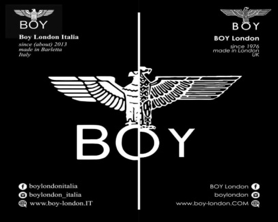 21 January 2019
Intellectual Property Unit / News / News_it/en
0 Comment
21 January 2019
Intellectual Property Unit / News / News_it/en
0 Comment
THE PHENOMENON OF LEGAL FAKE
The trademark is the distinctive that distinguishes products and services of a company from those of other companies, thus contributing to favoring the harmonious development of competition. The filing of the trademark represents the instrument to obtain a protection right and to allow a monopolistic use of the brand; by this way, third parties, in their commercial activity, cannot use a sign identical or similar to an already protected trademark, with reference to the same protected products or services. Moreover, by the registration, the owner obtains the right of exclusive use of the trademark and, simultaneously, acquires a negative veto right towards competitors; in accordante with the principle of territoriality, a trademark only gives protection in the countries in which it is registered.
In the light of the above mentioned criteria, over the last years, in sectors such as fashion and food in which the Italy brand moves billions of GDP through export activities, a practice known as legal fake has spread. This phenomenon concerns the conduct of all those who anticipate the holder of an original trademark in the filing of the same, in a territory in which the trademark in question is known but not yet registered; by this way, these people carry out own entrepreneurial activity as legitimate owners, exploiting the notoriety already gained by the original brand to the often unaware consumers.
The phenomenon in question is very complex and does not fall within the actual counterfeit, as it does not provide for the reproduction of original products, but the creation of a real business parallel to that of the owner of the original brand; the most famous cases are copies of those streetwear fashion brands like Supreme and Boy London. The BOY London brand, for example, has been a true icon in the underground world and worn, in the last thirty years, by every subculture; in 2013 an Italian company from Barletta started a mass production of items clearly inspired by the English brand, all in full compliance with the law. The “BOY LONDON Italia” trademark is in fact registered and bears the word “original” on all the garments, increasing the belief to buy the original line from a simple dealer in the area. The logo and the font used, however, are different from the English brand but similar enough to deceive an inexperienced eye; the Legal Fakers have taken advantage of the absence of protection to parasitically exploit the echo of the success that the imitated product has experienced on other markets.


However, today the current national legislation offers recommendations to counteract the phenomenon; the Court of Milan, in particular, clarified the fundamental need to keep the trademarks separate from the relative products and that the registration in Italy of a trademark identical to another better known but not registered in our country, does not recognize the right to copy also the related original products; in this case, in fact, he would have a situation of unfair competition and confusion; this situation determines the mistaken conviction of the public about the origin of the products and an undue exploitation of the reputation achieved by imitated products.
In addition to the indications provided by the jurisprudence, today it remains fundamental to underline the importance, especially for companies operating in the fashion sector, of paying great attention to managing the portfolio of own trademarks and monitoring the web in order to intercept any usurping initiative.


